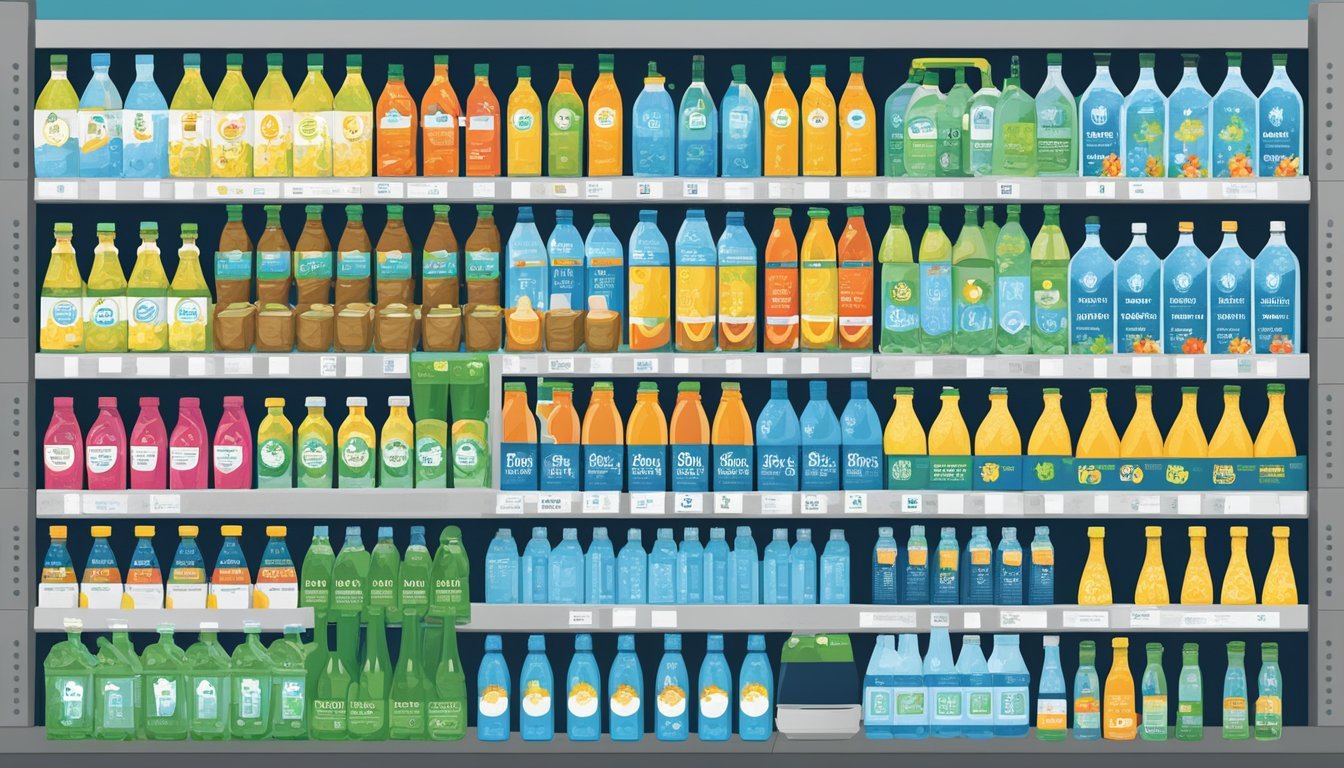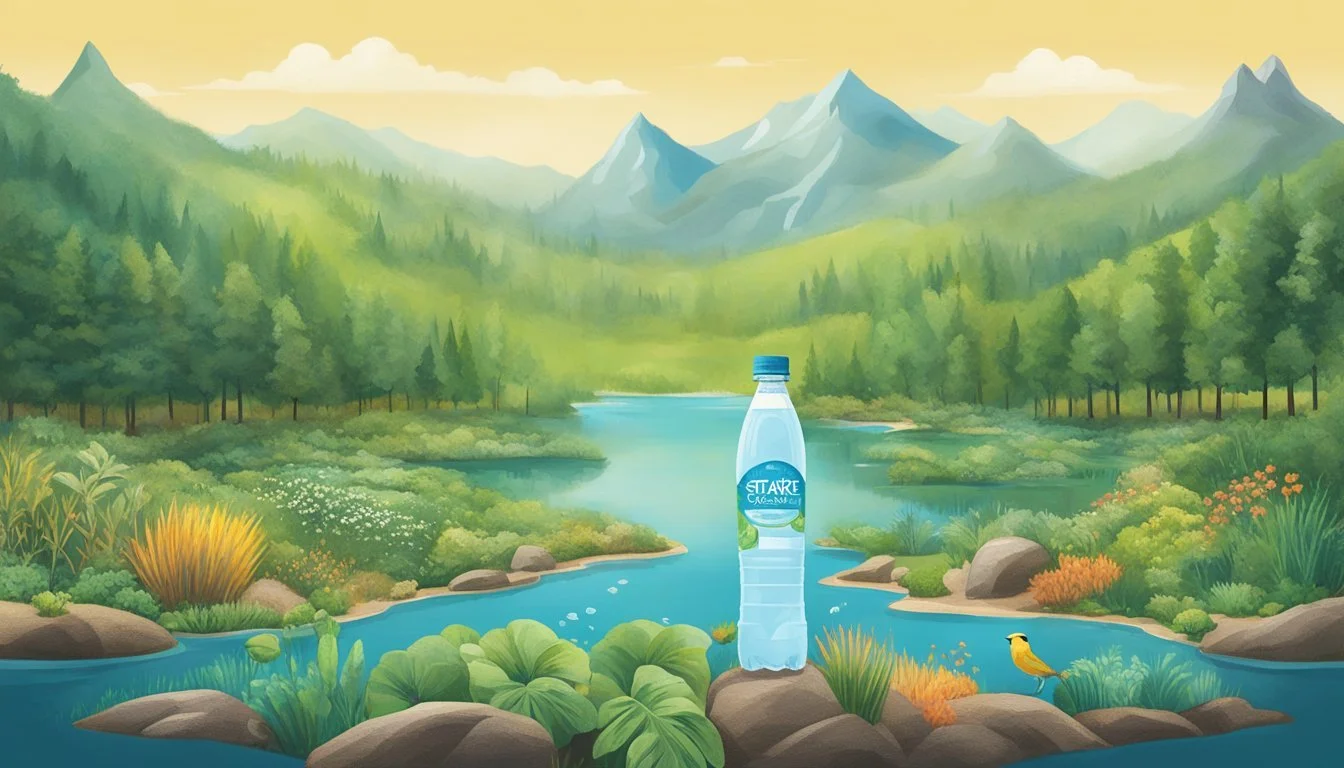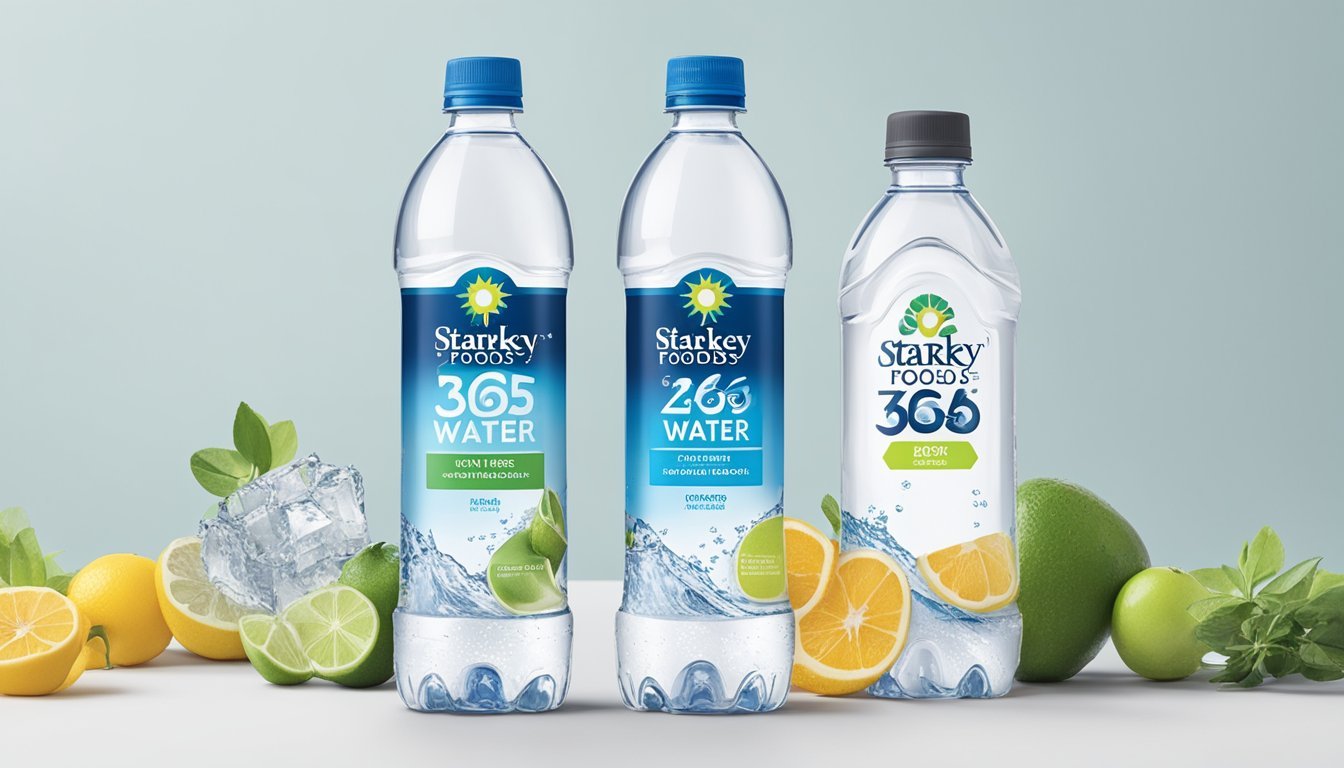Starkey vs. Whole Foods 365
Comparing Bottled Water Quality
Choosing between Starkey and Whole Foods 365 bottled water can be a challenging decision for health-conscious consumers. Starkey, manufactured by Whole Foods, has faced criticism for containing arsenic levels close to the legal federal limit. On the other hand, Whole Foods 365, while technically a spring water, has been criticized for its sour taste and dry aftertaste.
When considering both health implications and taste profiles, Whole Foods 365 may not be the best choice due to its unpleasant taste and potential health concerns linked to Starkey's arsenic content. Despite both options coming from the same parent company, these differences play a crucial role in determining which bottled water is the better option for you.
The popularity of bottled water brands stems not only from their perceived purity but also their taste. Icelandic Glacial, for instance, is often praised for its refreshing taste. While Starkey and Whole Foods 365 are more accessible and affordable, they fall short in both flavor and safety as outlined by Consumer Reports.
Understanding Bottled Water
Bottled water varies significantly in composition and regulatory oversight, impacting its quality and safety. This section explores the types of bottled water available and the standards governing its production.
Types of Bottled Water
Spring Water: Sourced directly from natural springs, this type is often valued for its mineral content. Brands like Starkey Spring Water fall under this category but can vary widely in taste and mineral composition.
Purified Water: This category includes water that has undergone processes such as distillation, deionization, or reverse osmosis to remove impurities. It usually tastes neutral and is generally free from contaminants.
Mineral Water: Characterized by high mineral content obtained from naturally occurring sources, it is often marketed for its potential health benefits.
Flavored and Enhanced Water: These types include added flavors, vitamins, or electrolytes. They are popular for those seeking an alternative to plain water.
Regulatory Framework
The Food and Drug Administration (FDA) is primarily responsible for regulating bottled water in the U.S. under the Federal Food, Drug, and Cosmetic Act. The standards set by the FDA include limits for contaminants such as arsenic, which must not exceed 10 parts per billion (ppb).
The International Bottled Water Association (IBWA) also plays a crucial role, advocating for high safety and quality standards. Members of the IBWA typically adhere to more stringent guidelines than those set by the FDA.
The Federal Limit for contaminants including arsenic ensures consumer safety, but reports have shown some brands like Starkey Spring Water testing close to this threshold. This highlights the importance of ongoing oversight and testing.
The regulatory landscape ensures that all bottled water products meet certain health and safety standards, regardless of whether they are marketed as spring, purified, or flavored waters. However, variations in strictness can affect the quality and safety of different brands.
Assessing Water Quality
Evaluating the water quality of Starkey and Whole Foods 365 involves analyzing various contaminants and minerals to determine their safety and benefits. Key factors include levels of arsenic, heavy metals like lead or iron, and beneficial minerals such as calcium.
Starkey Water Analysis
Starkey Spring Water, bottled by Whole Foods, has been under scrutiny for its arsenic levels. Tests revealed arsenic concentrations ranging from 9.49 to 9.86 parts per billion (ppb).
The federal limit for arsenic in bottled water is 10 ppb, making Starkey's levels concerning but technically compliant. As a naturally sourced water, Starkey also contains trace amounts of minerals like calcium, which contributes to its pH level being on the more basic side, typically around 7.7 to 8.2.
Heavy metals such as lead and iron are not significant concerns for Starkey, based on available data. However, the presence of PFAS chemicals wasn't explicitly tested in the data provided, leaving a gap in the overall safety evaluation.
Whole Foods 365 Water Analysis
Whole Foods 365 brand focuses on its noncarbonated bottled waters. Tests for the 365 brand revealed significantly lower arsenic levels compared to Starkey, usually below 3 ppb, which aligns with more recent research suggesting that lower levels are safer for long-term consumption.
This brand also reportedly maintains low levels of heavy metals, including lead and iron, ensuring the water remains safe and pure.
Calcium content in Whole Foods 365 water is minimal but enough to balance the pH level, generally resulting in a neutral range of 7.0 to 7.5. Like Starkey, specific tests for PFAS chemicals were not mentioned, which is a notable consideration for consumer safety.
Comparative Analysis
When comparing Starkey and Whole Foods 365, the stark difference is in the arsenic levels. Starkey's near-limit concentrations are significantly higher than Whole Foods 365's safer sub-3 ppb levels.
Both brands maintain low heavy metal content, with negligible amounts of lead and iron. In terms of beneficial minerals, Starkey offers a higher calcium content, contributing to a slightly higher pH level compared to Whole Foods 365's more neutral pH.
The absence of data on PFAS chemicals for both brands suggests an area for further testing. This would provide a clearer picture of comprehensive water quality and safety, especially considering growing concerns about these contaminants.
Health and Safety Concerns
Both Starkey and Whole Foods 365 bottled water brands have unique health and safety profiles. Starkey has raised certain issues regarding heavy metal contamination, while Whole Foods 365 focuses on maintaining regulatory compliance but still faces scrutiny.
Effects of Contaminants
Starkey Spring Water has been reported to contain high levels of arsenic, a heavy metal. Tests by Consumer Reports found arsenic levels close to the federal limit, measuring around 9.49 to 9.56 parts per billion. Exposure to arsenic is linked to serious health risks, such as cancer, cardiovascular disease, and lower IQ scores in children. These risks make the presence of arsenic in drinking water particularly concerning for consumers.
Federal Health Advisories
Federal guidelines cap arsenic levels in bottled water at 10 parts per billion. Starkey's levels, as found by Consumer Reports, hover just below this safety threshold. The U.S. Environmental Protection Agency (EPA) and the Food and Drug Administration (FDA) enforce these limits to reduce the long-term health risks of arsenic exposure. Although Whole Foods 365 follows these guidelines, consistent monitoring and transparency are crucial to ensure safety.
Expert Opinions
Experts emphasize the importance of stringent testing and transparency in bottled water production. Consumer Reports suggests that even arsenic levels below the federal limit can pose health risks over time. Another expert body, the California Center for Environmental Health, highlights that long-term exposure to even low levels of arsenic may contribute to significant health risks, reinforcing the call for better safety practices.
Starkey's proximity to the federal safety limit underscores the need for cautious consumer selection, while Whole Foods 365's compliance does not negate the need for vigilance.
Environmental Impact of Bottled Water
Bottled water has significant environmental implications. This section focuses on the effects of bottle production and waste, as well as the sustainability of water sources used by brands like Starkey and Whole Foods 365.
Bottle Production and Waste
Producing plastic bottles requires large amounts of fossil fuels and energy. The extraction and transportation of petroleum, the raw material for plastic, contribute to carbon emissions.
Plastic waste accumulation is a severe problem. Many plastic bottles end up in landfills or oceans, taking hundreds of years to decompose. This pollution harms marine wildlife and ecosystems.
Recycling rates for plastic bottles are low. In the United States, only about 30% of plastic bottles are recycled. The remainder contributes to environmental degradation.
Water Source Sustainability
The sustainability of water sources is crucial. Bottled water production can strain local water supplies, especially when drawn from natural springs or aquifers. Over-extraction can lead to reduced water availability for local communities and ecosystems.
Both Starkey and Whole Foods 365 obtain water from springs. Monitoring and managing these sources is essential to prevent depletion. Sustainable practices help protect the long-term availability of water.
Protecting natural water sources involves adhering to strict environmental standards. Ensuring minimal environmental disruption during extraction is vital for sustainability.
Consumer Insights
Understanding consumer preferences and experiences can provide an in-depth perspective on Starkey and Whole Foods 365 bottled water. Topics include taste, pricing, accessibility, and brand loyalty.
Taste and Preference
Consumers have shown varying preferences in taste between Starkey Spring Water and Whole Foods 365. Starkey is often noted for its crisp, clean taste, appreciated by those who prefer natural spring water.
Whole Foods 365 offers a more neutral flavor, often appealing to a broader audience. Consumer Reports and expert reviews underline the smoothness of Whole Foods 365, which can be a deciding factor for many purchasers.
Taste Comparisons:
Starkey: Crisp, clean spring water flavor.
Whole Foods 365: Neutral, smooth flavor.
Price and Accessibility
Price is a significant factor for consumers when choosing bottled water. Starkey tends to be positioned at a premium price point due to its spring water origin.
Whole Foods 365 is marketed as a more affordable option, making it accessible to a wider audience. Grocery stores, especially Whole Foods Market, frequently stock both brands, but Whole Foods 365 is often found in larger quantities and promotions.
Price Points:
Starkey: Premium pricing.
Whole Foods 365: Budget-friendly options.
Accessibility:
Both brands are readily available at Whole Foods Market.
Whole Foods 365 is often more widely accessible due to frequent promotions.
Brand Loyalty
Brand loyalty plays a crucial role in consumer choices for bottled water. Starkey has cultivated a loyal customer base that values natural spring water and is willing to pay a premium.
Whole Foods 365 benefits from the strong brand reputation of Whole Foods Market and appeals to everyday shoppers seeking reliability and affordability. Repeat purchases and trust in the retailer often drive loyalty for Whole Foods 365 more than brand specifics.
Consumer Loyalty:
Starkey: Strong loyalty among premium water buyers.
Whole Foods 365: Loyalty driven by Whole Foods Market’s reputation and affordability.
Brand Analysis
Starkey Spring Water, owned by Whole Foods, and Whole Foods 365 are examined for their brand message and consumer perception. This evaluation includes company ethos, marketing strategies, and consumer trust.
Starkey's Brand Message and Perception
Starkey Spring Water markets itself as a premium brand dedicated to purity and quality. Sourced from a spring in Idaho, it emphasizes natural origin and mineral content. Their message focuses on delivering water that is naturally alkaline with a pH balance of 9.6, which is marketed to health-conscious consumers.
Starkey faced some issues when reports surfaced about high arsenic levels, just below the federal limit. These findings by Consumer Reports affected consumer perception negatively. Despite this, Whole Foods continues to promote Starkey as a high-quality option, leveraging the natural spring source as a key selling point.
Whole Foods 365's Brand Message and Perception
Whole Foods 365 represents the more accessible and affordable product line within the Whole Foods brand. It offers various types of water, including spring, alkaline, and electrolyte options, catering to diverse consumer preferences. Their pricing strategy appeals to budget-conscious shoppers without compromising on the assurance of quality.
Whole Foods 365 aims to balance affordability with the store's reputation for natural and organic products. Despite the contrast with Starkey in terms of premium vs. budget-friendly focus, Whole Foods 365 maintains a strong market presence. Their consistent emphasis on quality and budget-friendliness makes them a favored choice for a broad audience.
Alternatives to Bottled Water
There are numerous options available for those looking to reduce their bottled water consumption, ranging from tap water using filtration systems to various market alternatives that offer different health benefits and tastes.
Tap Water and Filtration Systems
Tap water remains a convenient option for many individuals. Installing a filtration system can improve water quality by removing impurities. Reverse osmosis systems, for instance, effectively eliminate contaminants like lead, chlorine, and heavy metals. This ensures safer drinking water and often enhances taste.
Another popular choice is activated carbon filters, which are common in water filter pitchers. These filters can remove chlorine and some volatile organic compounds (VOCs), providing a cost-effective, sustainable alternative to bottled water. For those seeking mineral-rich water, some filters include remineralization stages to add essential minerals back into the water.
Market Alternatives
Several bottled water brands offer alternatives to Starkey and Whole Foods 365. Essentia and Smartwater, for example, provide high alkalinity and added electrolytes, appealing to those concerned about hydration and body pH balance.
Fiji and Icelandic Glacial are known for their natural artesian sources, which some consumers prefer due to their unique taste and purported purity.
For budget-friendly options, brands like Poland Spring and products from companies like Nestlé and Coca-Cola offer various types of bottled water, including spring, purified, and mineral-enhanced options. These brands are widely available and often priced lower than premium options.
Choosing the best alternative depends on an individual’s specific needs, be it for taste, health benefits, or environmental considerations.
More About Starkey
Icelandic Glacial vs Starkey: Which Bottled Water is Better?
Mountain Valley Spring Water vs Starkey: Which Bottled Water is Better?
Starkey vs Kirkland Signature: Which Bottled Water is Better?
Starkey vs Richard's Rainwater: Which Bottled Water is Better?
Starkey vs Whole Foods Italian Still Mineral water: Which Bottled Water is Better?
More About Whole Foods 365
Acqua Pana vs Whole Foods 365: Which Bottled Water is Better?
Alkaline88 vs Whole Foods 365: Which Bottled Water is Better?
Antipodes vs Whole Foods 365: Which Bottled Water is Better?
Aqua Carpatica vs Whole Foods 365: Which Bottled Water is Better?
Arrowhead vs Whole Foods 365: Which Bottled Water is Better?
Big Chill vs Whole Foods 365: Which Bottled Water is Better?
Boxed Water vs Whole Foods 365: Which Bottled Water is Better?
Cascade Mountain vs Whole Foods 365: Which Bottled Water is Better?
Castle Rock vs Whole Foods 365: Which Bottled Water is Better?
Core Hydration vs Whole Foods 365: Which Bottled Water is Better?
Crystal Geyser vs Whole Foods 365: Which Bottled Water is Better?
Deer Park vs Whole Foods 365: Which Bottled Water is Better?
Hawaii Volcanic vs Whole Foods 365: Which Bottled Water is Better?
Hawaiian Springs vs Whole Foods 365: Which Bottled Water is Better?
Ice Mountain vs Whole Foods 365: Which Bottled Water is Better?
Icelandic Glacial vs Whole Foods 365: Which Bottled Water is Better?
Just Water vs Whole Foods 365: Which Bottled Water is Better?
Liquid Death vs Whole Foods 365: Which Bottled Water is Better?
Mountain Valley Spring Water vs Whole Foods 365: Which Bottled Water is Better?
Nestle Pure Life vs Whole Foods 365: Which Bottled Water is Better?
Open Water vs Whole Foods 365: Which Bottled Water is Better?
Poland Spring vs Whole Foods 365: Which Bottled Water is Better?
Pure Life vs Whole Foods 365: Which Bottled Water is Better?
Purely Sedona vs Whole Foods 365: Which Bottled Water is Better?
Richard's Rainwater vs Whole Foods 365: Which Bottled Water is Better?
San Pellegrino vs Whole Foods 365: Which Bottled Water is Better?
Simple Truth vs Whole Foods 365: Which Bottled Water is Better?
Smartwater vs Whole Foods 365: Which Bottled Water is Better?
Solan de Cabras vs Whole Foods 365: Which Bottled Water is Better?
Talking Rain AQA vs Whole Foods 365: Which Bottled Water is Better?
Topo Chico vs Whole Foods 365: Which Bottled Water is Better?
Weird Water vs Whole Foods 365: Which Bottled Water is Better?
Whole Foods 365 vs 1907water: Which Bottled Water is Better?
Whole Foods 365 vs BodyArmor: Which Bottled Water is Better?
Whole Foods 365 vs CBD Living: Which Bottled Water is Better?
Whole Foods 365 vs Crystal Lake: Which Bottled Water is Better?
Whole Foods 365 vs Essence pH10: Which Bottled Water is Better?
Whole Foods 365 vs Kirkland Signature: Which Bottled Water is Better?
Whole Foods 365 vs Proud Source: Which Bottled Water is Better?
Whole Foods Italian Still Mineral water vs Whole Foods 365: Which Bottled Water is Better?
Zephyrhills vs Whole Foods 365: Which Bottled Water is Better?





